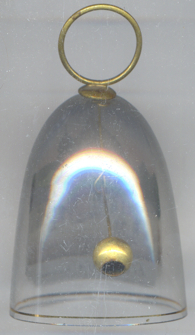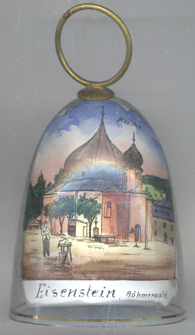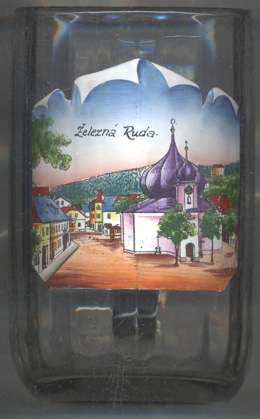

|
| ČESKÁ REPUBLIKA | CZECH REPUBLIC |
| Plzeňský kraj | Plzeň region |
| Okres: Klatovy |

 Železná Ruda (German: Markt Eisenstein) is situated at an elevation of 820 m in the
Šumava Mountains (Böhmerwald) of western Bohemia, at the border to Germany neighbouring the German community
of Bayerisch Eisenstein. The municipality of Železná Ruda has a population of about 1,600 (2017).
Železná Ruda (German: Markt Eisenstein) is situated at an elevation of 820 m in the
Šumava Mountains (Böhmerwald) of western Bohemia, at the border to Germany neighbouring the German community
of Bayerisch Eisenstein. The municipality of Železná Ruda has a population of about 1,600 (2017).
 Located on the old trading route, established alrady in the 13th century, that led from the Danube in Lower Bavaria via
Regen, Zwiesel, and Strážov (Drosau) to Klatovy (Klattau),
the village began to develop in the 16th century when iron had been discovered at the nearby Špičák
(Spitzberg) mountain. Both the German name, Eisenstein, and the Czech name, Železná Ruda,
can be translated as 'iron ore'. However, the iron deposits were already depleted in the 17th century. The production
of glass started in 1624 and the settlement soon obtained the status of a market town. Up until the 19th century,
more and more glass factories were founded. Towards the end of the 19th century, tourism became another important factor.
During the period of the German occupation between 1938 and 1945, Markt Eisenstein was part of the administrative seat
of the district of the same name in the administrative region Niederbayern und Oberpfalz (Lower Bavaria and Upper Palatinate).
After World War II, the German population (more than 90% before the war) was expelled. From 1948 until 1989, the entire
region was a military area and "forbidden zone". Following the Velvet Revolution of 1989, the border to Germany and the
neighbouring community of Bayerisch Eisenstein was opened again.
Located on the old trading route, established alrady in the 13th century, that led from the Danube in Lower Bavaria via
Regen, Zwiesel, and Strážov (Drosau) to Klatovy (Klattau),
the village began to develop in the 16th century when iron had been discovered at the nearby Špičák
(Spitzberg) mountain. Both the German name, Eisenstein, and the Czech name, Železná Ruda,
can be translated as 'iron ore'. However, the iron deposits were already depleted in the 17th century. The production
of glass started in 1624 and the settlement soon obtained the status of a market town. Up until the 19th century,
more and more glass factories were founded. Towards the end of the 19th century, tourism became another important factor.
During the period of the German occupation between 1938 and 1945, Markt Eisenstein was part of the administrative seat
of the district of the same name in the administrative region Niederbayern und Oberpfalz (Lower Bavaria and Upper Palatinate).
After World War II, the German population (more than 90% before the war) was expelled. From 1948 until 1989, the entire
region was a military area and "forbidden zone". Following the Velvet Revolution of 1989, the border to Germany and the
neighbouring community of Bayerisch Eisenstein was opened again.
The  parish church of Our Lady Help of Christians of the Star (kostel Panny Marie Pomocné z Hvězdy,
Mariä Hilf vom Stern) is the landmark of Železná Ruda. Its twelvesided onion dome is one of the largest
in the world. The hexagonal Baroque church was built in 1729–1733. The belltower was added in 1777. The main altar
holds an 1854 copy of the image of Our Lady Help of Christians, the original of which was created after 1537 by
Lucas Cranach the Elder for the Capuchin monastery of Innsbruck.
parish church of Our Lady Help of Christians of the Star (kostel Panny Marie Pomocné z Hvězdy,
Mariä Hilf vom Stern) is the landmark of Železná Ruda. Its twelvesided onion dome is one of the largest
in the world. The hexagonal Baroque church was built in 1729–1733. The belltower was added in 1777. The main altar
holds an 1854 copy of the image of Our Lady Help of Christians, the original of which was created after 1537 by
Lucas Cranach the Elder for the Capuchin monastery of Innsbruck.
[https://de.wikipedia.org/wiki/Zcaron;elezná_Ruda, https://en.wikipedia.org/wiki/Zcaron;elezná_Ruda,
https://cs.wikipedia.org/wiki/Zcaron;elezná_Ruda]
![[scale]](lineal.jpg)